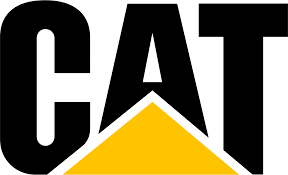This article mainly introduces Troubleshooting Loss of Coolant in Caterpillar 3208 Diesel Truck Engine
Caterpillar CAT Factory Password Calculator Generator 10 Digits VM Version
A. Outside Leaks
1. Leaks in Hoses of Connections… Check all hosesand connections for visual signs of leakage. If no leaks are seen, look for damage to hoses or loose clamps.
2. Leaks in the Radiator and/or Expansion Tank., Put pressure to the radiator and/or expansion tank with the 9S8140 Cooling Systen Pressurizing Pump Group and check for leaks.
3. Leaks in the Heater… Put pressure to the ccoling system with the 9S8140 Cooling System pressurizing Pump Group and check the heater for leaks.
Caterpillar Flash Files 2021.07 (Full Set)
4. Leaks in the Water Pump… Check the water pump for leaks before starting the engine, then start theengine and look for leaks. If there are leaks at the water pump, repair or install a new water purmp.5. Cylinder Head Gasket Leakage… Look for leaks along the surface of the cylinder head gasket. If you see leaks, install a new head gasket.B. Coolant Leaks at the Overflow Tube
5. Cylinder Head Gasket Leakage… Look for leaks along the surface of the cylinder head gasket. If you see leaks, install a new head gasket.
B.Coolant Leaks at the Overflow Tube
6. Bad Pressure Cap or Relief Valve.., Check the sealing surfaces of the pressure cap and the radiator to be sure the cap is sealing correctly. Check the opening pressure and sealing ability of the pressure cap ox relief valve with the 9S8140
Cooling System Pressurizing Pump Group.
7. Engine Runs Too Hot… If coolant temperature is too high, pressure wll be high enough to move the cap off of the sealing surface in the radiator and cause coolant loss through the overtiow tube, See
“Above Normal Heating’ in COOLING SYSTEM Chart
Caterpillar ET 2022A & 2019C Electronic Technician Diagnostic Software
8. Expansion Tank Too Small or installed Wrong.. The expansion tank can be either a part of the radiator or it can be instaled separately from the radiator. The expansion tank must be large enough to hold the expansion of the coolant as it gets warm or has sudden changes in pressure.
Make sure the expansion tank is instaliled correctly, and the size is according to the recommendations of the Truck Manufacturer.
9. Cylinder Head Gasket Leakage, or Crack(s) inCylinder Head or Cylincder Block.. Remove the radiator cap and with the engine running look for air bxubbles in the coolant. Bubbles in the coolant are a sign of probable leakage at the head gasket. with the engine not running, check each cylinder with the cylinder leakage tester. Special Instruction, Form No.
GMGO0694 gives the test procedure. If you see air bubbles in the coolant during this test, there is a leak of combustion gas into the cooling system. Remove the cylinder heads from the engine. Check cylinder heads. cylinder walils and head gasket surface of the cylinder block for cracks. When installing heads, use new head gasket.
C. Inside Leakage
10. Cylinder Head Gasket Leakage.. If the cylinder head gasket leaks between a water passage and an opening into the crankcase, coolant will get into the crankcase.
11. Crack(s) in Cylinder Head… Crack(s) in the upper Surface of the cylinder head, or an area between a water passage and an opening into the crankcase, can allow coolant to get into the crankcase.
12. Crack(s) in Cylincder Block… Crack(s) in thecylinder block belween a water passage and the crankcase will let coolant get into the crankcase.

